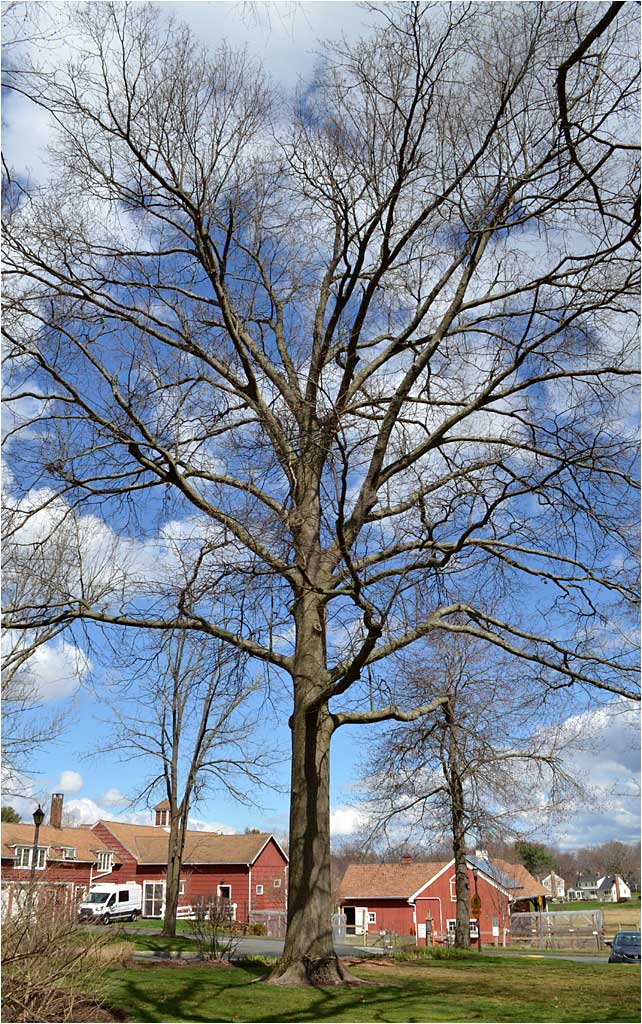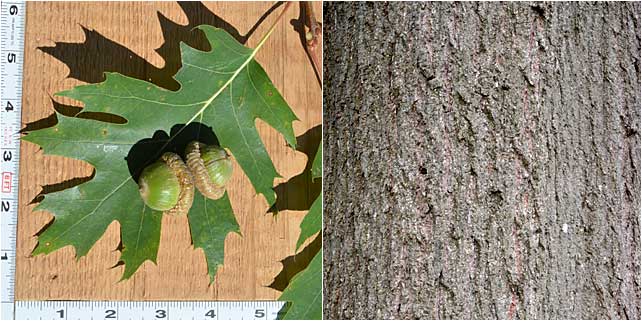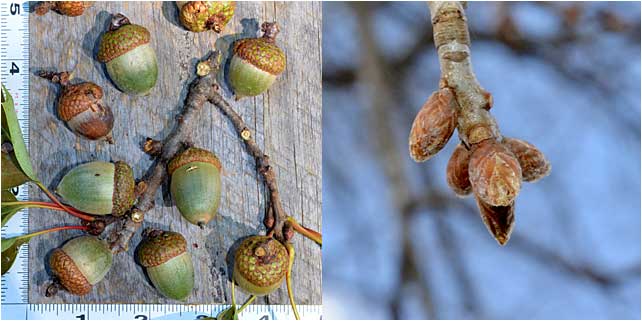9. RED OAK, Quercus rubra

Stately, majestic, and invaluable. If you were to build a perfect tree, this would be close. This is Red Oak, an iconic American and Northeast native tree that has sustained our land for thousands of years. To begin, simply look at the simplicity and structural elegance of the tree in Winter. The straight trunk extends well up the tree before branching, and the branching is balanced and symmetrical.
SPRING, GREEN ALL OVER

Oaks in general stun us with their very light and airy appearance in Spring. While young emerging leaves are very light in color, it is male catkins that are responsible for this ethereal look. Thousands and thousands, close-up (right). Oak trees (all species) are the most productive species in the U.S. in terms of the ecosystem (birds, mammals, insects) they support. (Douglas Tallamy, book: The Nature of Oaks)
ELUSIVE FEMALE FLOWERS

The male catkins tend to steal the show with their intense visual display. The majority of work, however, is done by the elusive female flowers who produce the valuable acorns. These are tiny, tiny flowers (much smaller than the tip of your little finger) that nestle in spaces between branches (axils). The stem of the female flower (after fertilization) will bear the acorn.
SUMMER FOLIAGE

Summer foliage is thick and lush. Acorns of the Red Oak take app. 16 months to mature (2 growing seasons) so you may find acorns of different sizes on the tree at any one time.
LEAF & BARK

Leaves of the Red Oak group of Oaks all have pointed lobes. Leaves of the species Red Oak may be 5 - 7 inches in length and have 7 - 11 lobes. There is a great deal of diversity in leaf size in any given tree (typically between those is shade and bright sunlight). The bark is distinctive, and most frequently described as having reddish "ski trails" running vertically on the tree.
FALL

Fall foliage for this Quercus rubra varies from year to year at The Westmoor Arboretum. Typically it is this lighter shade but on occasion it can be a deeper red.
ACORN MAST YEARS, BUD

Oaks vary their production of acorns from year to year to help control the size of predator populations (birds and mammals). Some years (particularly dry seasons) there will be very little. Other years, average. Once every 7-9 years is a "mast" year of exceptional production.
THE KEYSTONE CORNER

At the Westmoor Arboretum, this section is called The Keystone Corner because it contains three "keystone" species of native trees: Pin Oak, Black Cherry, and Red Oak. Keystone species provide native habitat for hundreds of organisms including fungi, bacteria, insects, birds, and mammals. Oaks are the #1 keystone tree species and Black Cherry is #2. (Douglas Tallamy, book: Bringing Nature Home)